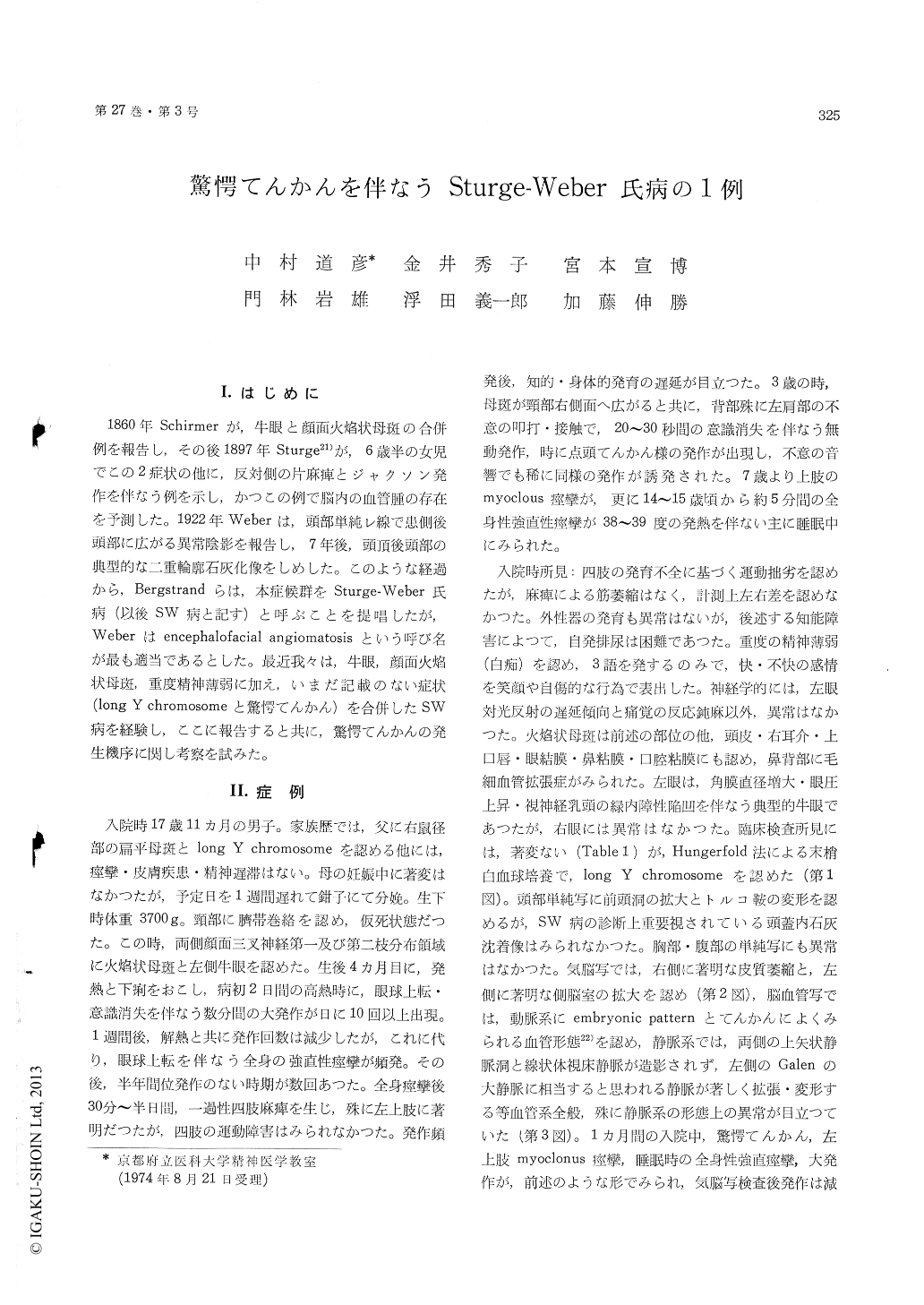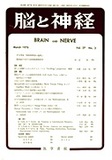Japanese
English
- 有料閲覧
- Abstract 文献概要
- 1ページ目 Look Inside
I.はじめに
1860年Schirmerが,牛眼と顔面火焔状母斑の合併例を報告し,その後1897年Sturge21)が,6歳半の女児でこの2症状の他に,反対側の片麻痺とジャクソン発作を伴なう例を示し,かつこの例で脳内の血管腫の存在を予測した。1922年Weberは,頭部単純レ線で患側後頭部に広がる異常陰影を報告し,7年後,頭頂後頭部の典型的な二重輪廓石灰化像をしめした。このような経過から,Bergstrandらは,本症候群をSturge-Weber氏病(以後SW病と記す)と呼ぶことを提唱したが,Weberはencephalofacial angiomatosisという呼び名が最も適当であるとした。最近我々は,牛眼,顔面火焔状母斑,重度精神穂弱に加え,いまだ記載のない症状(long Y chromosomeと驚愕てんかん)を合併したSW病を経験し,ここに報告すると共に,驚愕てんかんの発生機序に関し考察を試みた。
A 17 year old boy with startle epilepsy due to the Sturge-Weber syndrome (encephalofacial angio-matosis) was reported. He was delivered one week later than the promised day, in asphyxia with the umbilical cord tangled around his neck, and bilateral facial nevi, as well as buphthalmos of the left side were found. When suffered from the febrile disease at the age of 4 mo., generalized convulsions of either Grand mal type or tonic type were observed. Thereafter, there were a few remission periods lasted for half a year. At 3 yr old after enlarge-ment of the facial nevi to the right side of the neck, akinetic seizures or occasionally myoclonic jerks were found when suddenly touching or tapp-ing on his back, especially on the left shoulder, or less frequently when hearing sudden noises or sounds. Thereafter, local myoclonic seizures of the left upper limb had begun to attack him since 7 yr old.
On addmission, it was proved that he had mental retardation (idiot) & long Y chromosome, in addition to those symptoms, but he hadn't intracranial calcification and gross neurological signs. However, the whole cortical atrophy and the dilatation of the bilateral lateral ventricles, and abnormalities of veins and venous sinuses, such as dilatation and malformation of the great vein of Galen, on PEG and CAG were found.
On EEGs recorded in anaesthesia by amobarbital injection, bilaterally synchronized sharp & wave, spike & wave, polyspike & wave were found dif-fusely, with the dominant amplitudes on the left posterior region. Then, somatosensory, auditory and visual stimuli were presented and evoked potentials of each stimuli were simultaneously recorded in order to investigate the relationship between the stimulus and the paroxysm. It can be concluded that paroxysms were provoked most fre-quently by somatosensory stimuli and that their latencies were similiar to those of K-complex. Comparing with the characteristics of K-complex, stimuli with startle effects may provoke the seizures through the mechanism producing K-ccomplex.

Copyright © 1975, Igaku-Shoin Ltd. All rights reserved.


